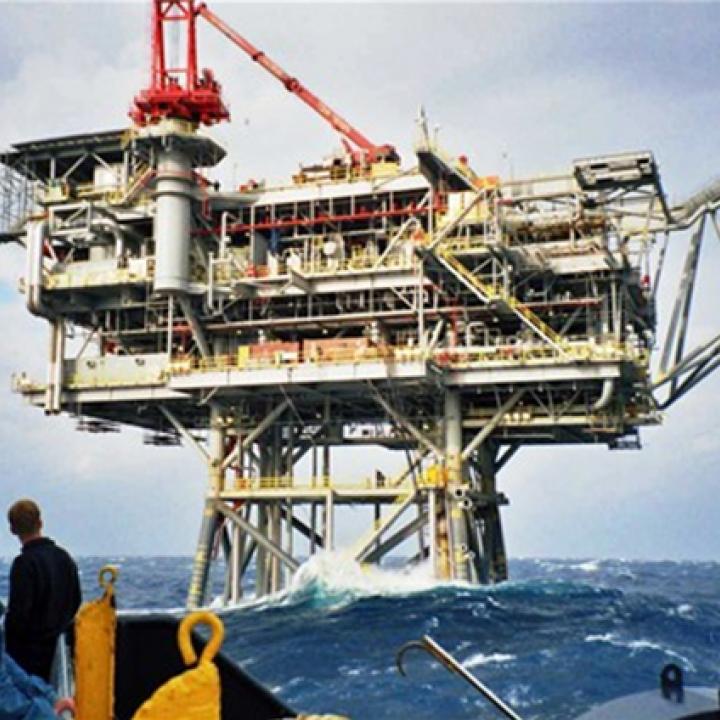
- Policy Analysis
- Policy Alert
The Obstacles Still Facing Israel’s Leviathan Gas Field

Regional and commercial challenges require an evolving business plan.
The Leviathan natural gas field has finally begun production, after long delays that pushed its start date to the last day of 2019. Flowing from undersea deposits located eighty miles off Israel’s coast, supplies will henceforth pass through processing facilities on the Leviathan rig constructed six miles offshore, then reach the mainland at the village of Dor and enter a gas grid that runs the length and breadth of the country.
Israel’s domestic demand for electricity is largely met by gas from the smaller Tamar field, which comes ashore much further south at Ashdod. Accordingly, contracts are in place to send Leviathan’s gas to Jordan and Egypt, though it is not clear when actual sales will start.
Leviathan was discovered in 2010, just one year after Tamar. Yet while Tamar came into production in 2013, political and legal procrastination held up Leviathan’s development for years. Domestic environmental factors have been a key concern—even today, during the pipeline’s officially authorized flushing phase, some local residents have reportedly left northern Israel due to fears of carcinogens. Unlike the Tamar platform, which is located out of sight thirteen miles from the mainland, the Leviathan platform was positioned closer to shore for security reasons and is clearly visible from towns in the Mount Carmel area and even the beach.
Meanwhile, Turkey’s recent moves have further complicated the regional picture for Israeli exports. Although Ankara’s problematic offshore gas claims have been on the agenda of U.S.-Israel security discussions for months, the November maritime boundary agreement between Turkey and Libya heightened these concerns. A mooted seabed pipeline to take Cypriot and Israeli gas to Greece and Italy would now have to go through contested exclusive economic zones, which could delay if not block the project. Turkey’s increasingly confrontational style likewise adds uncertainty to the prospect of exploiting hydrocarbon discoveries by Cyprus, including its Aphrodite field, part of which lies in Israel’s EEZ.
The viability of recent discoveries is also being tested by persistently low prices for natural gas on the international market. Leviathan has already cost $3.75 billion to bring to production, and its second stage of development is being delayed until its profitability is more certain. The plan is to pipe Leviathan supplies to Egypt for conversion into liquefied natural gas and subsequent export to global markets via tanker, but Cairo has been reducing LNG production of late due to poor profit margins.
Finally, the advent of Iran’s precision-guided missile capability is a major concern, as evidenced by its presumed responsibility for the attack on Saudi Arabia’s Abqaiq oil facility in September. Lebanese Hezbollah already has sophisticated Iranian missiles in its arsenal. Moreover, during a Gaza clash several years ago, a rocket hit an area of Israel just north of where Leviathan gas is coming ashore. In short, the celebration over new gas flows may be a brief one.
Simon Henderson is the Baker Fellow and director of the Bernstein Program on Gulf and Energy Policy at The Washington Institute.



